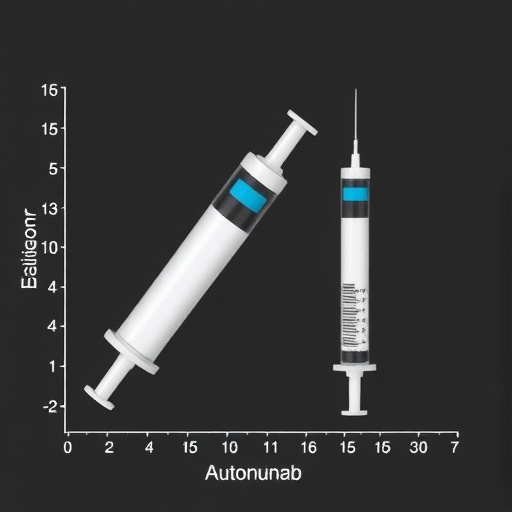
Researchers led by Freedman et al. have made significant strides in understanding the complex mechanisms underlying diffuse systemic sclerosis, a challenging autoimmune disorder characterized by widespread fibrosis and vascular abnormalities. In their recent study, published in “Military Medical Research,” the team’s focus on extracellular BAG3 offers promising new insights that could reshape how we approach diagnosis and treatment for this debilitating condition. The elevation of BAG3 levels in early diffuse systemic sclerosis provides a potential biomarker for early detection, shedding light on the intricate biological pathways that contribute to disease progression.
Systemic sclerosis, commonly referred to as scleroderma, presents a unique array of clinical manifestations, often starting insidiously and progressing unpredictably. This highlights the need for effective biomarkers that can signal the onset and enable earlier therapeutic interventions. Freedman and colleagues have identified that BAG3, a member of the Bcl-2-associated athanogene protein family, is significantly elevated in patients at the early stages of diffuse systemic sclerosis. Their findings suggest that BAG3 may play a dual role, not just as a biomarker, but potentially also in the pathogenesis of this disease.
BAG3 is known to be involved in various cellular processes, including autophagy, apoptosis, and cellular stress responses. This multifunctionality raises intriguing questions about its role in the etiology of systemic sclerosis. The researchers postulate that the increased levels of BAG3 could indicate heightened cellular stress in tissues prone to fibrosis, thus serving as a hallmark for early disease activity. Their results prompt further exploration into how BAG3 can be leveraged not only for diagnostic purposes but possibly for therapeutic interventions that could slow disease progression.
The team conducted a comprehensive study involving sera from patients diagnosed with early diffuse systemic sclerosis, comparing these with healthy controls. The analysis revealed that higher concentrations of extracellular BAG3 correlate with other clinical markers of disease severity. This correlation elevates the importance of BAG3 as a potential target for therapeutic strategies. If confirmed in larger cohorts, this could transform how clinicians monitor disease activity and tailor treatment regimens.
Freedman et al. also highlight the evolutionary importance of BAG3 in the context of autoimmune diseases. It has been suggested that the overexpression of BAG3 might be related to a compensatory response to cellular stress mechanisms linked to inflammation and fibrosis. This opens avenues for exploring targeted therapies that can modulate BAG3 expression or function, potentially leading to breakthrough treatments for diffuse systemic sclerosis.
Furthermore, BAG3’s role in extracellular matrix remodeling presents intriguing possibilities. The study implies that BAG3 could influence the fibrotic processes primarily associated with skin involvement in diffuse systemic sclerosis. Understanding this relationship could pave the way for innovative approaches in therapeutic design, focusing on the modulation of extracellular matrix dynamics to alleviate fibrotic manifestations.
The findings underscore the need for additional research into the therapeutic implications of targeting BAG3. By using advanced techniques to manipulate this protein’s activity, researchers could develop novel treatments that not only improve outcomes for patients but could also enhance their quality of life. The initial results serve as a foundation for future studies investigating whether modulation of BAG3 levels can directly impact disease progression and clinical management.
Additionally, the study raises important questions about heterogeneity within systemic sclerosis. Different patients may exhibit varied responses to BAG3 modulation, particularly given the multifaceted nature of the disease. Future research must focus on understanding these dynamics to ensure that any novel therapies developed are both effective and personalized, catering to the specific needs of diverse patient populations.
As medical researchers and practitioners digest these findings, they must also consider the broader implications of autoimmune research in relation to systemic sclerosis. The ongoing work that examines the intersection between innate and adaptive immunity in this disease context will contribute further to an integrated understanding of not only the clinical aspects of systemic sclerosis but also its underlying pathophysiological processes.
In conclusion, the work of Freedman et al. offers a compelling narrative about the potential of BAG3 to revolutionize the diagnosis and management of diffuse systemic sclerosis. With further research, there is hope for the development of robust biomarkers and targeted therapies that could significantly improve outcomes for patients suffering from this complex disease. The elevation of extracellular BAG3 presents a pivotal moment in our understanding of systemic sclerosis, signaling a shift towards more precise and effective clinical interventions aimed at this challenging condition.
As the scientific community continues to investigate BAG3 and its multifaceted role in systemic sclerosis, the commitment to translating these discoveries into tangible benefits for patients remains paramount. The journey from laboratory to clinic is fraught with challenges, but the promise shown by extracellular BAG3 could herald a new dawn in the fight against diffuse systemic sclerosis.
By acknowledging the advances made in this field, researchers hope to provide hope to millions living with systemic sclerosis, underscoring that innovation in medical research can lead to profound improvements in both understanding and combating chronic diseases.
Subject of Research: Extracellular BAG3 in diffuse systemic sclerosis
Article Title: Extracellular BAG3 is elevated in early diffuse systemic sclerosis
Article References:
Freedman, P., De Marco, M., Rosati, A. et al. Extracellular BAG3 is elevated in early diffuse systemic sclerosis.
Military Med Res 12, 37 (2025). https://doi.org/10.1186/s40779-025-00628-w
Image Credits: AI Generated
DOI: 10.1186/s40779-025-00628-w
Keywords: systemic sclerosis, BAG3, biomarker, fibrosis, autoimmune disease, therapeutic intervention, clinical research.
Tags: autoimmune disorder mechanismsautophagy and apoptosis in systemic sclerosisBAG3 role in disease progressionBcl-2-associated athanogene protein familycellular processes in sclerodermadiffuse systemic sclerosis researchearly detection of sclerodermaearly systemic sclerosis biomarkerfibrosis and vascular abnormalitiesIncreased extracellular BAG3scleroderma clinical manifestationstherapeutic interventions for systemic sclerosis



